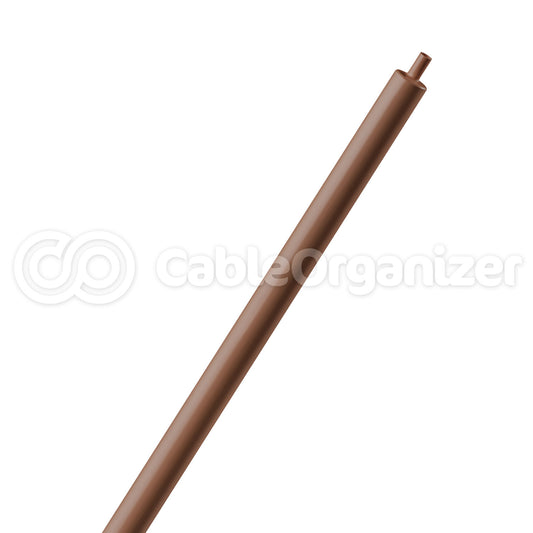How Do I Use Heat Shrink Tubing?
By: CableOrganizer®
Heat shrink tubing can do many things. Not only does it provide your cables with protection against abrasion, chemicals and weather, it's also great for bundling, color-coding and strain relief. Insulating your cables with heat shrink can be an easy do-it-yourself activity…if you know the tricks for proper shrinking. Thankfully, we've got a helpful how-to guide so your adventures with this incredible shrinking tube will pay off with great results.
First things first: What will you need? Obviously, you'll need the heat shrink itself, but you'll also need either a heat gun or a heat shrink oven. Since you aren't a dragon and cannot produce the level of heat necessary to shrink said tubing using your breath alone, you'll need a heating agent.

SAFETY FIRST
Remember, when dealing with a heating agent: that fire is indeed hot; and you should take proper precautions. Good ideas: wear eye protection, wear a respirator to avoid fume inhalation, wear gloves, tie back long hair; and don't wear loose or baggy clothing that could end up in the path of the heating element.
Additionally, if operating a heat gun inside, make sure your area is well ventilated, even if you're wearing a mask. Make sure your work area is free from any debris that may prove flammable; and never point the heat gun at yourself. That may seem like common sense, but it's easier to do than you might think.
Now, with that out of the way, let's see what this heatshrink stuff is all about.

STEP 1
It may appear backwards, but shrinkage occurs in this tubing when heat is applied (hence the name “heat shrink”). But how much does it shrink, exactly? Excellent question. Selecting the proper size of heat shrink tubing for your project is important. Two terms that are important to remember here are recovered diameter (the diameter after shrinking) and expanded diameter (the pre-shrinkage diameter). In order to get a secure fit, be sure that the tubing's recovered diameter is smaller than the diameter of the area you're going to insulate. That way, when it shrinks, you'll get a tight fit. At the same time, the tubing's expanded diameter needs to be large enough to easily fit over the area to be insulated, as well as any connectors attached to it. Common sense would dictate that if you can't comfortably fit your bundle or cables within a tube in the first place, shrinking it won't do you much good.

STEP 2
Once you've determined you have the proper dimensions for your heat shrink, the next step is to cut the heat shrink tubing to a usable length. Then be sure to allow for a minimum 1/4" overlap over any existing insulation or connectors. Keep in mind that tubing also shrinks lengthwise, typically 5-7% during the shrinking process. Most heat shrink can be cut easily with standard scissors.

STEP 3
Now you've got everything all measured and cut, it's time to slide the cut tubing over the object or objects that you're covering. If you'll be splicing two cables together, slide the tubing over the center of the splice. This will allow for equal overlap on both sides, so that the entire splice itself is fully covered.

STEP 4
Before shrinking, check your tubing's specifications for the recommended heating temperature. Any commercial heat gun or heat shrink oven can be used to shrink the tubing. Since uncontrolled heat can cause uneven shrinkage, physical damage and insulation failure, the use of open flame as a substitute for a heat gun or heat shrink oven is not recommended.

STEP 5
If you're covering a long length of cable with tubing, begin shrinking at one end; and gradually work your way down to the other. To ensure that the tubing shrinks evenly and without air bubbles, rotate the project as you're applying heat.
Evenly apply heat over the length and around the diameter of the tubing until it uniformly shrinks. Ensure it conforms to the shape of the cable, hose, splice or other item it's covering. Immediately remove the heat source and allow the tubing to cool slowly before you apply physical stress to it.
Make sure to avoid overheating. The last thing you want is charred, brittle heatshrink tubing after you've spent all that time.
Tip: Silicone lubricant spray can be applied to wires or cords to guide heat shrink over them without compromising the heat shrink material.


